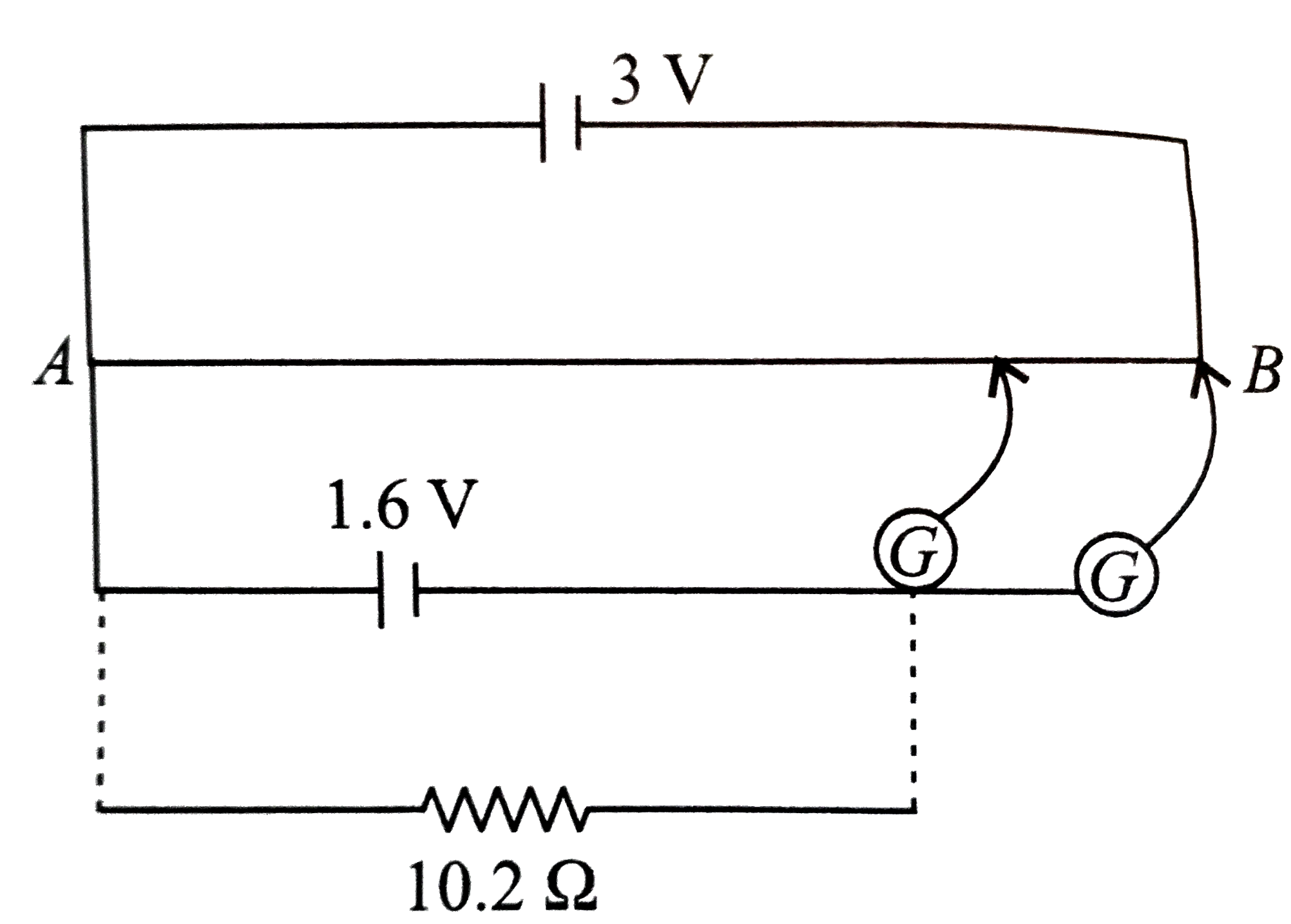A 2.0 V potentiometer is used to determine the internal resistance of 1.5V cell. The balance point of the cell in the circuit is 75cm. When a resistor of 10Ω is connected across cel, the balance point sifts to 60cm. The internal resistance of the cell is
1.5Ω
2.5Ω
3.5Ω
4.5Ω
The correct Answer is:B
r=R(l1l2−1)=10(7560−1)
=2.5Ω
Topper's Solved these Questions
- CURRENT ELECTRICITYBOOK - DC PANDEYCHAPTER - CURRENT ELECTRICITYEXERCISE - OBJECTIVE_TYPE
1 Videos
- CURRENT ELECTRICITYBOOK - DC PANDEYCHAPTER - CURRENT ELECTRICITYEXERCISE - Level 1 Subjective
53 Videos
- CURRENT ELECTRICITYBOOK - DC PANDEYCHAPTER - CURRENT ELECTRICITYEXERCISE - Level 1 Assertion And Reason
11 Videos
- COMMUNICATION SYSTEMBOOK - DC PANDEYCHAPTER - COMMUNICATION SYSTEMEXERCISE - Subjective
11 Videos
- ELECTROMAGNETIC INDUCTIONBOOK - DC PANDEYCHAPTER - ELECTROMAGNETIC INDUCTIONEXERCISE - Medical entrances gallery
25 Videos
Similar Questions
Fig. shows a 2.0 V potentiometer used for the determination of internal resistance of a 1.5 V cell. The balance point of the cell in open circuit is 76.3 cm. When a resistor of 9.5Ω is used in the external circuit of the cell, the balance point shifts to 64.8 cm length of the potentiometer wire. Determine the internal resistance of the cell.

View SolutionFigure 6.13 shows a 2.0V potentiometer used for the determination of internal resistance of a 1.5V cell. The balance point of the cell in open circuit is 76.3cm. Whan a resistor of 9.5Ω is used in the external circuit of the cell, the balance point shifts to 64.8cm, length of the potentiometer. Dentermine the internal resistance of the cell.

View Solution
Knowledge Check
A 2.0V potentiometer is used to determine the internal resistance ofa I.SY cell. The balance point of the cell in the open circuit is obtained at 75cm. When· a resistor of 10Ω is connected across the cell, the balance point shifts to 60cm. The internal resistance of the cell is:
A1.5ΩB2.5ΩC3.5ΩD4.5Ω3V poteniometer used for the determination of internal resistance of a 2.4V cell. The balanced point of the cell in open circuit is 75.8cm. When a resistor of 10.2Ω is used in the external circuit of the cell the balance point shifts to 68.3cm length of the potentiometer wire. The internal resistance of the cell is
 A2.5ΩB2.25ΩC1.12ΩD3.2Ω
A2.5ΩB2.25ΩC1.12ΩD3.2ΩThe emf of cell is balanced by balancing length 450 cm . When the resistance of 10Ω is connected across the cell, balancing length changes by 100 cm. The internal resistance of a cell is
A1.8ΩB2.8ΩC3.8ΩD2.5Ω
A potentiometer is being used to determine the internal resistance of a primary cell. The balance point for the cell in an open circuit is at 76.3 cm. when the cell sends a current in a resistor of 9.5Ω, the balance point shifts to 64.8cm. Find the internal resistance of the cell.
View SolutionIn a potentiometer arrangement for determining the emf of cell, the balance point of the cell in open circuit is 350 cm. When a resistance of 9Ω is used in the external circuit of cell , the balance point shifts to 300 cm. Determine the internal resistance of the cell.
View SolutionIn a potentiometer arrangement for determining the emf of a cell, the balance point of the cell in open circuit is 350 cm. When a resistance of 9Ω is used in the external circuit of the cell, the balance point shifts to 300 cm. Determine the internal resistance of the cell.
View SolutionA 10 V cells of negligible internal resistance is connected in parallel across a battery of emf 200 V and internal resistance 38Q . As shown in the figures , Find the value of current in the circuit

In a potentiometer arrangement for determining the emf . of a cell the balance point of the cell in open circuit is 350 cm. When a resistance of 9Q . is used in the external circuit of the cells the balance point shift to 300 cm. Determine the internal resistance of the cell.
View SolutionFigure shows a 2.0V potentiometer used for the determination of internal resistance of a 1.5V cell , When the key is not inserted in the plug , the balance point is at 60 cm and in the closed circuit the balance point is at 50 cm. Find the internal resistance of the cell .

View Solution
